Datasheet
Year, pagecount:2009, 48 page(s)
Language:English
Downloads:17
Uploaded:September 18, 2009
Size:61 KB
Institution:
-
Comments:
Attachment:-
Download in PDF:Please log in!
Comments
No comments yet. You can be the first!Most popular documents in this category
Content extract
Choosing an appropriate antimicrobial agent Consider: 1) the host 2) the site of infection 3) the spectrum of potential pathogens 4) the likelihood that these pathogens are resistant to antimicrobial agents 5) the cost of the agent Cure depends on the bug, the drug, and the host 6-year-old boy • • • • • • • • Fever (38.8 C) for 3 days Purulent nasal discharge Bilateral otorrhoea Cough Frontal headache URTI ten days ago Diagnosis? Therapy? The best choice of treatment • • • • • i.v cefazolin p. os cefaclor p.os ceftibuten p. os clarithromycin p. os amoxicillin Diagnosis of acute otitis media DEFINITION • Presence of fluid in the middle ear • Acute sign of illness – Young child • waking up,crying, irritability, fever – Older child • Red, bulging drum (scarlet red, not pink!) • Orange or yellow color drum • Limited mobility of the drum – pneumatic otoscopy • tympanometry Etiology of acute otitis media • • • •
Str. pneumoniae H. influenzae M. catarrhalis Viruses Otitis media Etiology Resistance to penicillin Mechanism related to Spontaneous recovery Str. peumoniae (35-40 %) 2 - 40 % PBP rare M. catarrhalis (15-20%) 70 - 80 % -lactamase up to 80 % H. influenzae (15-20 %) 20 - 30 % -lactamase up to 80 % - - Viruses (20-25 %) - Treatment of acute otitis media: decision making (1) • 60-70 % spontaneous recovery! • Decision making – – – – Clinical microbiology Efficacy Cost Side effects First drug of choice to treat acute otitis media • Amoxicillin – effective – safe (high spontaneous cure rate!) – relatively inexpensive Second drug of choice to treat acute otitis media • TMP-SMX – on a cost basis • Erythromycin-Sulfisoxasole (Pediazole) • Clindamycine • Amoxicillin-clavulanate Use of Clindamycin • • • • • • • • • Does not work for H.influenzae or M Catarrhalis Does not taste great Only for
Pneumococcus In areas with high resistance of Pneumococcus If Augmentin fails Not for routine treatment in acute OM Gram stain and culture Clindamycin + Rifampin (no synergism) Clindamycin-SMX !? Single i.m dose of ceftriaxon • Ceftriaxon (1x) vs Amoxicillin (10 days) – Initial failure – Relapse – Recurrences • Avoids the problem of compliance Double aspirates • At the time of presentation • 3-6 days after treatment • Microbiologic endpoint Prevention of otitis media • • • • Influenza vaccine Prevention of URT viral illnesses Smoking! Breast feeding Diagnosis of sinusitis (1) • No child with URTI leaves the office without AB • Problematic - an excuse for use of AB Diagnosis of sinusitis (2) • History (5 yr-old) • • • • • cold that began 10 days ago clear nasal discharge fever for a day or 2 cough appetite and energy level returned to normal after 2-4 days – Cough and clear nasal discharge • Confirmation of the
diagnosis: X-ray Diagnosis of sinusitis (3) • Prolonged course sinusitis – more than 10 days of nasal discharge – watery or purulent – thick or thin – clear or cloudy – daytime cough • Short course sinusitis – acute onset of fever – pain, swelling of the eyes, mucopurulent rhinitis Confirmation of the clinical diagnosis of sinusitis (4) • Trans-nasal puncture • X-ray • >4 mm of thickening of the mucous membrane • clouding of the sinus (haziness, opacity) • air fluid level – – – – – – a half of normal plain radiographs are abnormal on CT a third of abnormal plain radiographs are normal on CT total opacity and air-fluid level correlation well with CT 85% of adults with URTI have total opacification CT is the gold standard - not for routine use!! CT for children with head injury had abnormal sinuses! Diagnosis of sinusitis (5) • 1st group – persistant symptoms for >10 days – no improvement – in children <6 year of
age X-ray is abnormal (>90%) • 2nd group – purulent nasal discharge – high fever – pain, swelling of the eyes Treatment of sinusitis • ACUT SINUSITIS – – – – Amoxicillin TMP-SMX Erythromycin-Sulfisoxasole Clindamycin • CHRONIC SINUSITIS – Clindamycin • Macrolides – clarythromycin (sinusitis) – azythromycin (otitis) Group A streptococcal infections • Controversy in Dg. and Th • Reappearance of acute rheumatic fever • Increase in invasive GAS infections – necrotizing fasciitis – TSS Clinical diagnosis of GAS tonsillo-pharyngitis • • • • • • • 5-12 years of age acute onset of fever and sore throat absent of viral type symptoms abdominal pain winter and spring time lymphadenitis exsudate+palatal petechia Laboratory diagnosis of GAS tonsillo-pharyngitis • Throat culture (90% accurate) – Requires 24-48 hrs • Antigen detection tests – Latex agglutination – EIA – Optical IE Diagnosis of URT viral
illness • • • • • Rhinitis Rhinorrhoea Horsenes Cough The age of the patient Treatment of GAS tonsillo-pharyngitis • Rational – Prevention of acute rheumatic fever – Prevention of spread – Relieve symptoms Treatment of GAS tonsillopharyngitis • Oral penicillin – 10 day course – 2-3x a day enough • Benzathine penicillin G – Single i.m dose • No advantage of Amoxicillin • Alternatives to penicillin (penicillin allergy) – Erythromycin, 10 day course – Clindamycin, 10 day course – 5 day Azithromycin (FDA) • Treatment of carriers Role of cephalosporins • • • • • Slightly higher rate of eradication of GAS Shorter time (3-5 days ?) Broader antimicrobial spectrum More expensive than Penicillins Not a choice in penicillin allergy Which of the following infections is most likely to resolve completely when treated with amoxicillin? A. B. C. D. E. Acute otitis media Acute sinusitis Endocervical gonorrhea Streptococcal
pharyngitis Wound cellulitis Treatment in invasive GAS infection • Surgical therapy • Antibiotics – – – – – penicillin G + Clindamycin ampicillin nafcillin amoxicillin vancomycin Among the following, the most appropriate indication for tonsillectomy is 1. A single episode of peritonsillar abscess without prior history of tonsillitis 2. Chronic recurrent otitis media and rhinosinusitis 3. Chronic throat pain and serologic evidence of recent Epstein-Barr virus infection 4. Five episodes of streptococcal and nonsterptococcal acute tonsillitis annually for the past 2 years 5. Persistently positive throat culture for group A betahemolytic Streptococcus in an asymptomatic child The most common cause of failure of therapy of otitis media is resistant pneumococcus • True • False The most common cause of failure of therapy of otitis media is resistant pneumococcus • True • False Children with otitis media due to resistant pneumococcus can be expected
to fail therapy with amoxicillin • True • False Children with otitis media due to resistant pneumococcus can be expected to fail therapy with amoxicillin • True • False Children with purulent nasal discharge for seven days should be treated for sinusitis • True • False Children with purulent nasal discharge for seven days should be treated for sinusitis • True • False Cephalosporins are preferred for GAS pharyngitis because they eradicate organisms from the throat more effectively • True • False Cephalosporins are preferred for GAS pharyngitis because they eradicate organisms from the throat more effectively • True • False Amoxicillin clavulanate will be effective against resistant pneumococcus because it inhibits beta lactamase • True • False Amoxicillin clavulanate will be effective against resistant pneumococcus because it inhibits beta lactamase • True • False A shorter course of therapy generally is acceptable
with the new azalides because of the long half-life resulting from strong tissue binding • True • False A shorter course of therapy generally is acceptable with the new azalides because of the long half-life resulting from strong tissue binding • True • False The new cephalosporins, macrolides, and azalides are now preferred for failed therapy of otitis media • True • False The new cephalosporins, macrolides, and azalides are now preferred for failed therapy of otitis media • True • False Amoxicillin is the first-line therapy for treatment of otitis media in communities in which pneumococcal resistance is 20 % • True • False Amoxicillin is the first-line therapy for treatment of otitis media in communities in which pneumococcal resistance is 20 % • True • False The choice of therapy for acute sinusitis is the same as that for acute otitis media • True • False The choice of therapy for acute sinusitis is the same as that for
acute otitis media • True • False
Str. pneumoniae H. influenzae M. catarrhalis Viruses Otitis media Etiology Resistance to penicillin Mechanism related to Spontaneous recovery Str. peumoniae (35-40 %) 2 - 40 % PBP rare M. catarrhalis (15-20%) 70 - 80 % -lactamase up to 80 % H. influenzae (15-20 %) 20 - 30 % -lactamase up to 80 % - - Viruses (20-25 %) - Treatment of acute otitis media: decision making (1) • 60-70 % spontaneous recovery! • Decision making – – – – Clinical microbiology Efficacy Cost Side effects First drug of choice to treat acute otitis media • Amoxicillin – effective – safe (high spontaneous cure rate!) – relatively inexpensive Second drug of choice to treat acute otitis media • TMP-SMX – on a cost basis • Erythromycin-Sulfisoxasole (Pediazole) • Clindamycine • Amoxicillin-clavulanate Use of Clindamycin • • • • • • • • • Does not work for H.influenzae or M Catarrhalis Does not taste great Only for
Pneumococcus In areas with high resistance of Pneumococcus If Augmentin fails Not for routine treatment in acute OM Gram stain and culture Clindamycin + Rifampin (no synergism) Clindamycin-SMX !? Single i.m dose of ceftriaxon • Ceftriaxon (1x) vs Amoxicillin (10 days) – Initial failure – Relapse – Recurrences • Avoids the problem of compliance Double aspirates • At the time of presentation • 3-6 days after treatment • Microbiologic endpoint Prevention of otitis media • • • • Influenza vaccine Prevention of URT viral illnesses Smoking! Breast feeding Diagnosis of sinusitis (1) • No child with URTI leaves the office without AB • Problematic - an excuse for use of AB Diagnosis of sinusitis (2) • History (5 yr-old) • • • • • cold that began 10 days ago clear nasal discharge fever for a day or 2 cough appetite and energy level returned to normal after 2-4 days – Cough and clear nasal discharge • Confirmation of the
diagnosis: X-ray Diagnosis of sinusitis (3) • Prolonged course sinusitis – more than 10 days of nasal discharge – watery or purulent – thick or thin – clear or cloudy – daytime cough • Short course sinusitis – acute onset of fever – pain, swelling of the eyes, mucopurulent rhinitis Confirmation of the clinical diagnosis of sinusitis (4) • Trans-nasal puncture • X-ray • >4 mm of thickening of the mucous membrane • clouding of the sinus (haziness, opacity) • air fluid level – – – – – – a half of normal plain radiographs are abnormal on CT a third of abnormal plain radiographs are normal on CT total opacity and air-fluid level correlation well with CT 85% of adults with URTI have total opacification CT is the gold standard - not for routine use!! CT for children with head injury had abnormal sinuses! Diagnosis of sinusitis (5) • 1st group – persistant symptoms for >10 days – no improvement – in children <6 year of
age X-ray is abnormal (>90%) • 2nd group – purulent nasal discharge – high fever – pain, swelling of the eyes Treatment of sinusitis • ACUT SINUSITIS – – – – Amoxicillin TMP-SMX Erythromycin-Sulfisoxasole Clindamycin • CHRONIC SINUSITIS – Clindamycin • Macrolides – clarythromycin (sinusitis) – azythromycin (otitis) Group A streptococcal infections • Controversy in Dg. and Th • Reappearance of acute rheumatic fever • Increase in invasive GAS infections – necrotizing fasciitis – TSS Clinical diagnosis of GAS tonsillo-pharyngitis • • • • • • • 5-12 years of age acute onset of fever and sore throat absent of viral type symptoms abdominal pain winter and spring time lymphadenitis exsudate+palatal petechia Laboratory diagnosis of GAS tonsillo-pharyngitis • Throat culture (90% accurate) – Requires 24-48 hrs • Antigen detection tests – Latex agglutination – EIA – Optical IE Diagnosis of URT viral
illness • • • • • Rhinitis Rhinorrhoea Horsenes Cough The age of the patient Treatment of GAS tonsillo-pharyngitis • Rational – Prevention of acute rheumatic fever – Prevention of spread – Relieve symptoms Treatment of GAS tonsillopharyngitis • Oral penicillin – 10 day course – 2-3x a day enough • Benzathine penicillin G – Single i.m dose • No advantage of Amoxicillin • Alternatives to penicillin (penicillin allergy) – Erythromycin, 10 day course – Clindamycin, 10 day course – 5 day Azithromycin (FDA) • Treatment of carriers Role of cephalosporins • • • • • Slightly higher rate of eradication of GAS Shorter time (3-5 days ?) Broader antimicrobial spectrum More expensive than Penicillins Not a choice in penicillin allergy Which of the following infections is most likely to resolve completely when treated with amoxicillin? A. B. C. D. E. Acute otitis media Acute sinusitis Endocervical gonorrhea Streptococcal
pharyngitis Wound cellulitis Treatment in invasive GAS infection • Surgical therapy • Antibiotics – – – – – penicillin G + Clindamycin ampicillin nafcillin amoxicillin vancomycin Among the following, the most appropriate indication for tonsillectomy is 1. A single episode of peritonsillar abscess without prior history of tonsillitis 2. Chronic recurrent otitis media and rhinosinusitis 3. Chronic throat pain and serologic evidence of recent Epstein-Barr virus infection 4. Five episodes of streptococcal and nonsterptococcal acute tonsillitis annually for the past 2 years 5. Persistently positive throat culture for group A betahemolytic Streptococcus in an asymptomatic child The most common cause of failure of therapy of otitis media is resistant pneumococcus • True • False The most common cause of failure of therapy of otitis media is resistant pneumococcus • True • False Children with otitis media due to resistant pneumococcus can be expected
to fail therapy with amoxicillin • True • False Children with otitis media due to resistant pneumococcus can be expected to fail therapy with amoxicillin • True • False Children with purulent nasal discharge for seven days should be treated for sinusitis • True • False Children with purulent nasal discharge for seven days should be treated for sinusitis • True • False Cephalosporins are preferred for GAS pharyngitis because they eradicate organisms from the throat more effectively • True • False Cephalosporins are preferred for GAS pharyngitis because they eradicate organisms from the throat more effectively • True • False Amoxicillin clavulanate will be effective against resistant pneumococcus because it inhibits beta lactamase • True • False Amoxicillin clavulanate will be effective against resistant pneumococcus because it inhibits beta lactamase • True • False A shorter course of therapy generally is acceptable
with the new azalides because of the long half-life resulting from strong tissue binding • True • False A shorter course of therapy generally is acceptable with the new azalides because of the long half-life resulting from strong tissue binding • True • False The new cephalosporins, macrolides, and azalides are now preferred for failed therapy of otitis media • True • False The new cephalosporins, macrolides, and azalides are now preferred for failed therapy of otitis media • True • False Amoxicillin is the first-line therapy for treatment of otitis media in communities in which pneumococcal resistance is 20 % • True • False Amoxicillin is the first-line therapy for treatment of otitis media in communities in which pneumococcal resistance is 20 % • True • False The choice of therapy for acute sinusitis is the same as that for acute otitis media • True • False The choice of therapy for acute sinusitis is the same as that for
acute otitis media • True • False
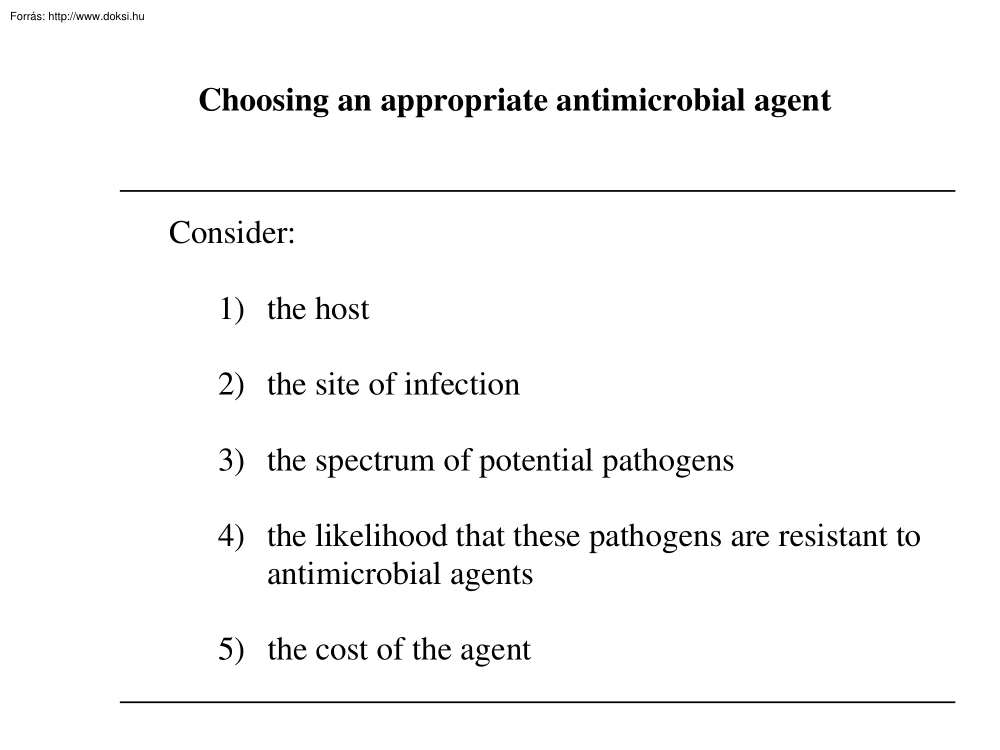
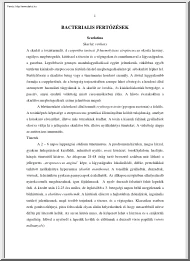
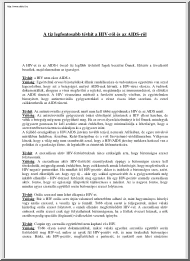
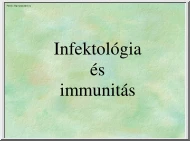
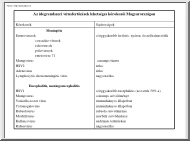
 When reading, most of us just let a story wash over us, getting lost in the world of the book rather than paying attention to the individual elements of the plot or writing. However, in English class, our teachers ask us to look at the mechanics of the writing.
When reading, most of us just let a story wash over us, getting lost in the world of the book rather than paying attention to the individual elements of the plot or writing. However, in English class, our teachers ask us to look at the mechanics of the writing.